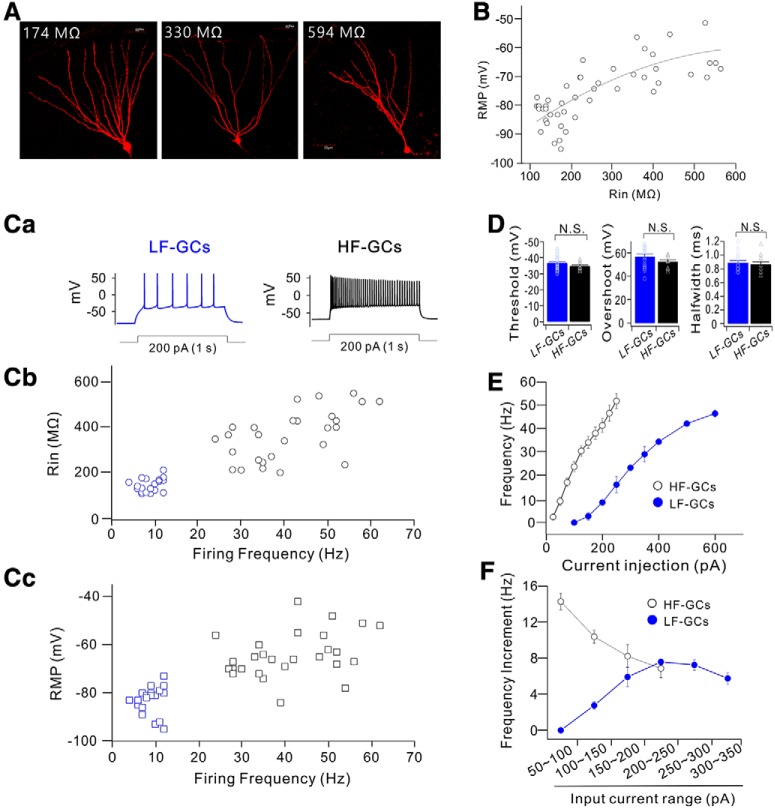Figure 3.
GCs cluster into two distinct populations based on the firing frequency. A, Sample images of GCs with different Rin values. B, Plots of RMP values against Rin. Data obtained from 47 cells are fitted to a polynomial function: RMP (mV) = −97.6 + 0.11 Rin + 0.000087 Rin2. C, Firing frequency of the repetitive APs evoked by a depolarizing current injection showed two distinct groups. Representative traces for APs of low-frequency (LF)- and high-frequency (HF)-GCs in response to 200 pA (1 s duration) current injection (Ca). Plots for Rin (Cb) and RMP (Cc) against firing frequency at 200 pA showed that firing frequency decreased with a decrease in Rin and RMP, reaching the lowest level at Rin <200 MΩ and at RMP below −75 mV. D, No significant difference in AP threshold (p = 0.16), overshoot (p = 0.13), and AP width (p = 0.64) were found between LF-GCs and HF-GCs, N.S. (not significant) p > 0.05. E, The firing frequency plotted against the injected currents (F–I curve) in LF- (filled blue circle, n = 12) and HF- (open black circle, n = 13) GCs. HF-GCs fired more action potentials in response to smaller current injection than LF-GCs. F, Increment in firing frequency for given increases in input currents in LF-GCs (filled blue circle) and HF-GCs (open black circle).

